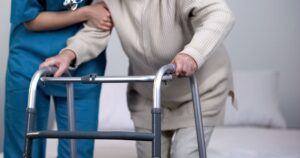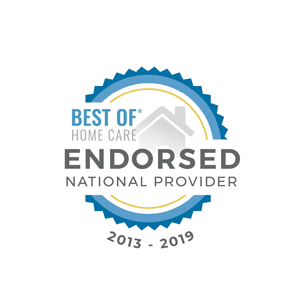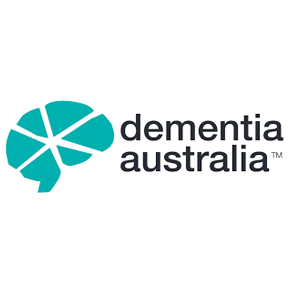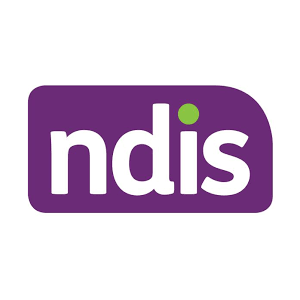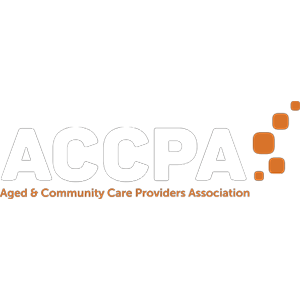Stroke is one of Australia’s leading causes of death and disability, with one Australian having a stroke every 19 minutes and more than 445,087 Australians living with the effects of stroke. In line with Heart Week (2-8 May) we are raising awareness around the importance of heart health to at-risk Australians. We will take a deep dive into the warning signs of stroke and what to do if you or your loved one is symptomatic.
Recovery after a stroke can be lifelong, however you are not alone. Home Care Assistance can support you after suffering a stroke and help you overcome any physical, cognitive, and emotional challenges. Our Care Workers can provide in-home care services to maximise long-term independence and allow you or your loved one to safely remain ageing in place.
What is a Stroke?
The brain requires oxygen and nutrients carried via blood to control the human body.
When the brain does not get the blood it needs, a stroke occurs as a blood clot or a blood vessel that has burst or leaked. A stroke is always a medical emergency no matter how large or small.
There are two types of stroke:
- Ischaemic stroke: Where a blood clot or plaque blocks arteries.
- Haemorrhagic stroke: Where an artery breaks or bursts.
How a stroke affects someone is dependent on where in the brain it occurred, how big the stroke is, as well as how long it took for medical assistance. Every stroke is different as a result and may impact the way a person’s body works and feels as well as how they think.
What is a TIA?
You may have heard of a TIA, which is a transient ischaemic attack. A TIA occurs when blood supply is blocked to the brain for a short period of time. The symptoms are identical to that of a stroke, but they go away on their own, most often within a few minutes. A TIA can be a warning sign that a large stroke could happen. Just like strokes, a TIA needs emergency treatment and should never be ignored.
Symptoms of Stroke
Signs you might be having a stroke include the following:
- Sudden weakness and/or numbness on the body or face, especially on one side
- Sudden slurred speech
- Sudden confusion
- Sudden changes in vision impacting one or both eyes
- Sudden loss of coordination that may include dizziness and balance issues
- Sudden severe headache that may cause vomiting with no known cause
The Stroke Foundation recommends the use of the acronym FAST to identify if someone is having a stroke.
Face: Has their face dropped? Has their mouth drooped?
Arms: Can they lift both arms?
Speech: Is their speech slurred? Do they understand you?
Time: Time is critical. Call 000 now if you see any of these signs.
Act FAST.
Prevention
Stroke can happen to anyone with a risk higher in men. encouragingly, more than 80 percent of strokes can be prevented. You can reduce your risk of stroke by making some positive lifestyle changes.
Risk factors for stroke that are within our control include:
- High blood pressure
- Being overweight
- Smoking
- High cholesterol
- High intake of alcohol
- Diabetes
Tips to prevent risk of stroke include:
- Regular health check-ups to find out your risk factor for stroke, especially important in older adults.
- Eating well can lower blood pressure and cholesterol as well as prevent diabetes, heart disease and stroke.
- Staying active, read more in our Let’s Get Physical, Physical article here on the benefits.
- Avoid or decrease alcohol
- Quit smoking as it doubles your risk of stroke as it increases blood pressure and reduces oxygen flow to the brain.
An absolute CVD risk calculator has been developed by the Heart Foundation to determine the likelihood of a person experiencing a cardiovascular event such as heart attack or stroke within the next five years. Click here to find out more about the CVD risk calculator.
Living Post Stroke
Every stroke is different. For some people the impact of a small stroke can be overcome, and they can live a normal life. For others, disabilities because of stroke, can be ongoing and severe. Ensuring a stroke survivor has a support network consisting of family and friends, as well as intensive rehabilitation from healthcare professionals, can always improve quality of life.
If you or your loved one is ageing in place, having in-home care support from Home Care Assistance can provide essential assistance with things such as:
- Driving and errands
- Meal preparation and nutrition support
- Mobility assistance
- Personal assistance, including hygiene and dressing
- Medication reminders
- Companionship and activities
- Emotional support for individuals and families
Recovering from a stroke can take time and be life long, our Care Workers at Home Care Assistance can help care for your loved one to ensure they remain safe, supported, and holistically cared for.
References:
As a leading age care provider, Home Care Assistance offers tailored in-home care services for older Australians, enabling them to live happier and healthier lives in the comfort of their own homes.
We offer private and government subsidised Care Packages and have office locations that are a registered NDIS provider. Our Care Workers undergo extensive training in order to deliver unmatched in-home aged care services where people can continue ageing in place. We are proud ambassadors of the My Aged Care government funded aged care program, enabling Australians to successfully navigate the process and gain approval for in-home care support packages. Home Care Assistance offers hourly care, specialised care, Alzheimer’s and Dementia care, hospital to home care, and 24 hour in home care.




